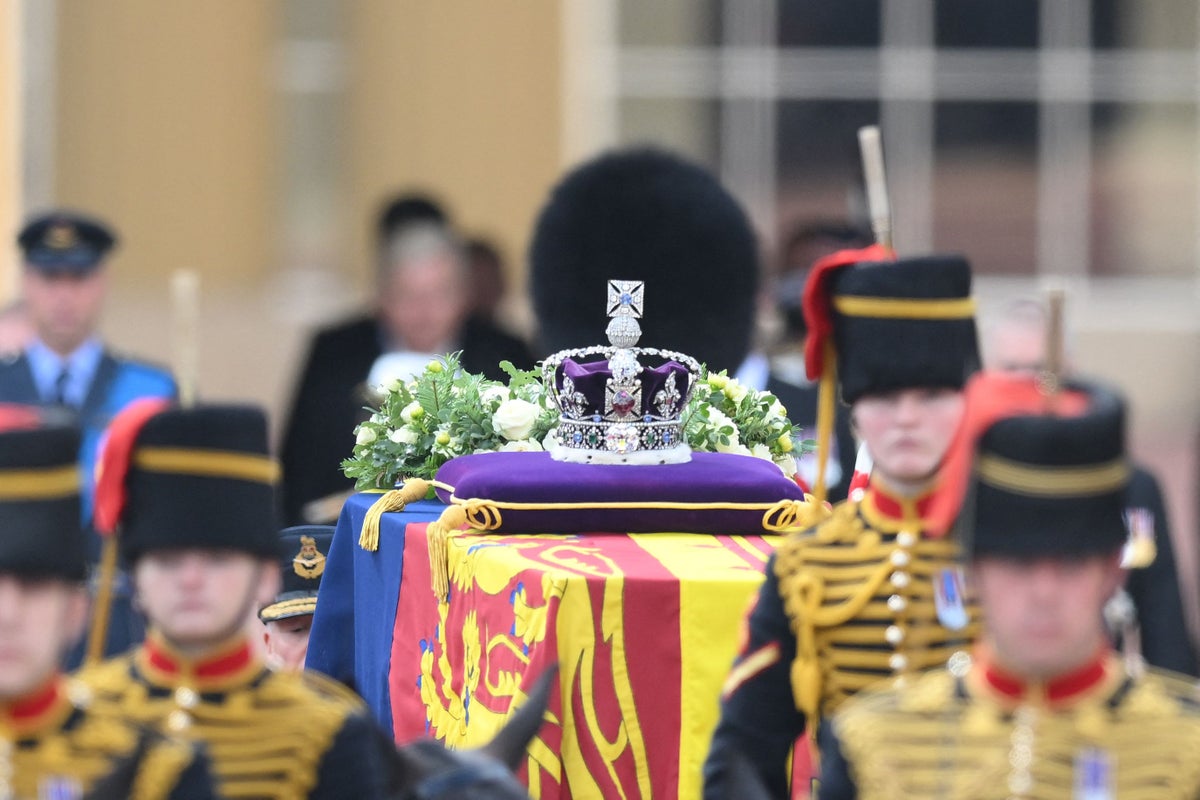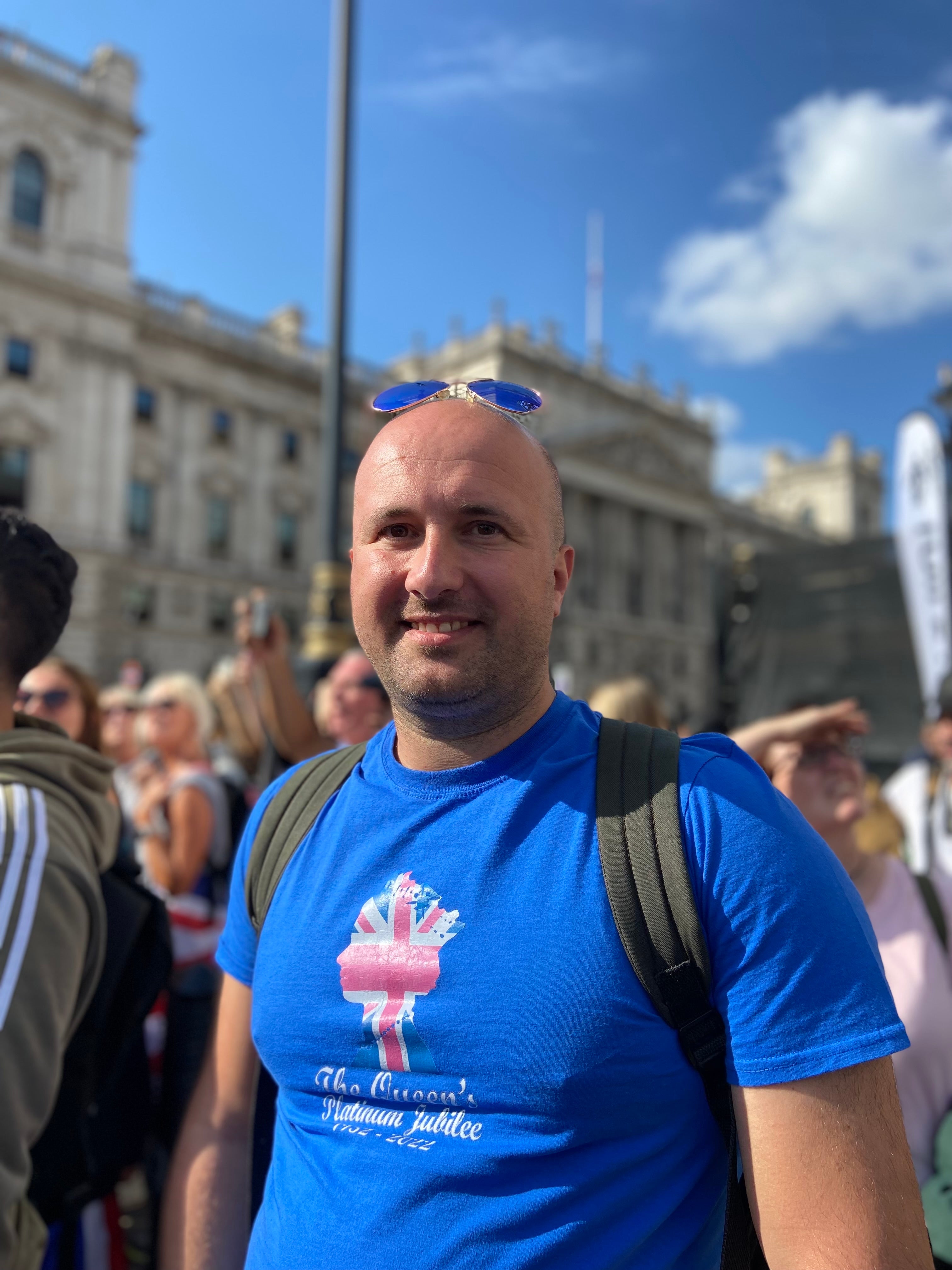
The late Queen has left Buckingham Palace for one last time, in a solemn procession to her lying-in-state.
A gun carriage bearing her coffin travelled across central London to Westminster Hall, followed on foot by King Charles III, his siblings and princes William and Harry, watched by crowds of thousands, many of them in tears.
The imperial state crown on a velvet cushion lay on top of the coffin, alongside a wreath of flowers.
The Band of the Scots Guards and the Band of the Grenadier Guards played funeral marches throughout the 38-minute procession, starting with Beethoven’s Funeral March No 1.

The heavy steps of the guard of honour, formed by the King’s Guard and troops from the Queen’s Company 1st Battalion Grenadier Guards, marched in time with the heavy beat, reinforcing the solemnity of the occasion.
The Queen died six days ago at Balmoral, aged 96, just three months after the nation celebrated her platinum jubilee. She will lie in state at the hall until her funeral on Monday.
The King, his sons, his sister and brothers marched in step with the gun carriage of King’s Troop Royal Horse Artillery, which was draped in a royal standard. All were in uniform except for Prince Andrew and Prince Harry, who are no longer working royals.
They were followed by Prince Anne’s son Peter Phillips, her husband Vice Admiral Sir Tim Laurence, the Queen’s cousin the Duke of Gloucester and the Earl of Snowdon.
The Prince of Wales stared straight ahead as he processed directly behind his father the King, in keeping with his place as the new heir to the throne.


King Charles, in his Field Marshal uniform, held on to the end of his Field Marshal Baton, which was presented to him by his mother when he became Field Marshal in 2012.
Procession viewing areas open to the public along the route were full, and silence fell among the thousands-strong crowd as a muffled drum draped in black was beaten at 75 paces per minute.
There were 10 pallbearers, found from service equerries to the late Queen.
A detachment of the Life Guards, as well as household cavalry and the household of the Queen, walked in front of the coffin.
After the procession had passed, the crowd outside Buckingham Palace erupted into applause.
In a poignant symbol, the gun carriage of the King’s Troop Royal Horse Artillery was used, as it was to transport the coffins of the late Queen’s mother and father.


The imperial state crown glittered in the daylight as the crowds held up their phones to capture the scenes.
At Horse Guards Parade, crowds of mourners, many in tears, applauded as the procession entered the vast ceremonial parade ground.
Among those lining the route of the procession was Amanda Salt, 53, a director of a business from Shoreditch, who found the occasion “completely overwhelming”.
“I think quite possibly the saddest day I’ve ever experienced,” she told The Independent. “She gave stability, dignity, service in a way that we just don’t ever appreciate of people.”
“I just think she was a remarkable, remarkable woman and I think the world is a worse place without her,” said Ms Salt.

She said the walk behind the coffin for princes William and Harry likely brought back memories from when they followed their mother Princess Diana’s coffin in 1997.
“It’s just terribly, terribly sad,” she said.
Lisa Satchell, 54, from Romford in Essex, said watching the procession “gets you in the throat a little bit”. She told The Independent: “It’s been very emotional,” adding she was happy to see Prince William and Prince Harry back together and united.
“Unfortunately it’s through tragedy,” she said, adding that the occasion resurfaced a lot of the emotions she felt when Princess Diana died.
“I wasn’t able to get to see Diana and this time I was kind of determined and this time through the help of my friend we managed to get here,” she said, adding that they were going to try now to see the Queen lying in state. “It’s possibly, for me, a once-in-a-lifetime thing,” she said.
Paul Salvin, 40, had caught an early morning train from Teesside to be in London to watch the procession.
“I’m an ex-serviceman, I served for four years back in the early noughties, and I just felt it was my duty to come down,” he said.

“I’m a monarchist I always have been and always will be, I just think it’s great for the country – good luck to King Charles.”







